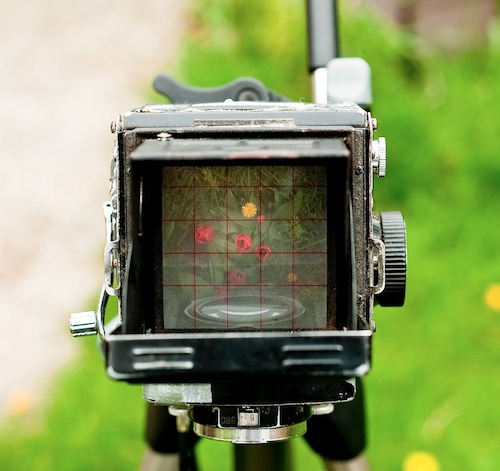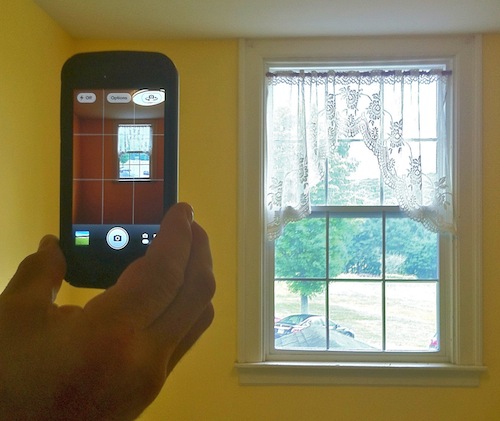One of my greatest pleasures as a 12 year-old kid was borrowing my dad's Rolleiflex camera (with permission, of course), setting it up on a tripod, and focusing the world onto the ground glass. Things seemed both more vivid and defined when resolved onto that ruled surface. The image was upside-down, small, square, a bit dim, and two-dimensional, but it was more real to me than the world that was projected onto it.
 Photograph by Rhys Edwards
Photograph by Rhys Edwards
We "see" as light is projected onto the retina (a curved but essentially two-dimensional surface). The image formed on our retina is smaller, inverted, and reversed from than the world viewed. Everything we see has been projected onto that little movie screen (though there is no corresponding little picture sent to our brains). We don't see the world; we see through this visual intermediary, our internal ground glass.
The world resists control, and experience is fleeting and ephemeral. I think visual art must have started as a way to bring order to nature and to hold on to, share, and exchange information and experience. Art had to be removed from life to preserve it. It must have seemed kind of magic to make something that outlasts you, reaches past you, and touches other people. It really is magic if you think about it.
I don't borrow the Rolleiflex and tripod any more. I found a new and more portable way to project, order, and record the world. It's always with me. It's my iPhone.
